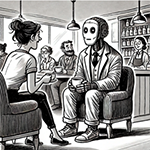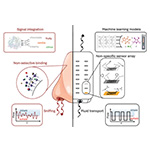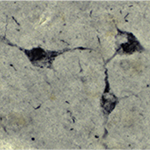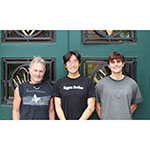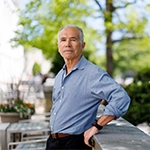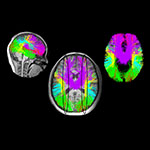Featured Story:
How Did Language Evolve? Comparing Human & Chimpanzee Brains
May 21, 2025
For many years, researchers have debated whether language in humans emerged through the evolution of gestural communication or vocal communication. Erin Hecht shares new data from chimpanzee research supporting a model where both modalities together contributed.
Community Stories
May 14, 2025
Cagri Yuksel describes new research revealing that REM sleep and vagal nerve activity may play a crucial role in how the brain recovers from fear. These findings could open the door to innovative therapies for PTSD and related conditions.
Original article in: Psychological Medicine >
March 21, 2025
Have you ever had the sense that the person you’re talking to is just a “robot”? That they’re following some script without thinking about it? New research by Ilona Bass and Tomer Ullman examines the detection of automatic behavior in other people, finding it is a common and robust phenomenon across domains.
Original article in: American Psychologist >
February 21, 2025
Haritosh Patel and colleagues explore how nature’s blueprint for smell can inspire next-generation gas sensors. By applying principles from biological olfaction—such as active sniffing, adaptive sensing, and neural-inspired processing—this work presents a new perspective for more sensitive, selective, and robust electronic noses with applications in healthcare, environmental monitoring, and beyond.
Original article in: Advanced Science >
January 13, 2025
Jakob Hartmann and Kerry Ressler share new work uncovering how SKA2, a protein regulating stress-related signaling, interacts with the glucocorticoid receptor to maintain balance in the brain’s stress response. By highlighting altered SKA2 expression in bipolar disorder, this work offers new insights into the molecular underpinnings of stress-related psychiatric conditions and potential pathways for therapeutic intervention.
Original article in: Proceedings of the National Academy of Sciences >
In the News
May 28, 2025
Astrocytes are the most abundant non-neuronal cell type in the brain, though the mechanisms they use to communicate with neurons remains unclear. A new study from Florian Engert (Harvard), Misha Ahrens (Janelia) and colleagues, first author Alex B Chen. has identified a role for astrocytes in implementing feedforward inhibition over slow timescales and filled in critical molecular details in a biochemical pathway that astrocytes use to signal to neurons
Original article in: Science >
May 28, 2025
A new study from Xiang Gao (Fudan University), Alberto Ascherio (Harvard School of Public Health), and colleagues, first author Peilu Wang (Fudan University) finds that people who consume higher servings of ultra-processed foods are more likely to show early signs of Parkinson's.
Original article in: Neurology >
May 28, 2025
Moyamoya disease is a rare, progressive condition that narrows the brain’s blood vessels, leading to an increased risk of stroke and other neurological conditions. New research from Laura L. Lehman (BCH) and colleagues, first author Banu Ahtam sheds light on the relationship between brain injury and symptoms in children with moyamoya, potentially impacting how doctors approach treating children with asymptomatic moyamoya disease.
Original article in: Journal of Pediatrics >
Awards & Honors
May 20, 2025
Congratulations to Joshua Sanes, the John C. Tarr Professor of Molecular and Cellular Biology and former HBI Co-Director, on being been named a Fellow of the British Royal Society!
May 19, 2025
Round up of awards and honors earned by the HBI community.
Banner Image:
Spiral ganglion neuron density. Image courtesy of Isle Bastille (Lab of Lisa Goodrich, Harvard Medical School).




